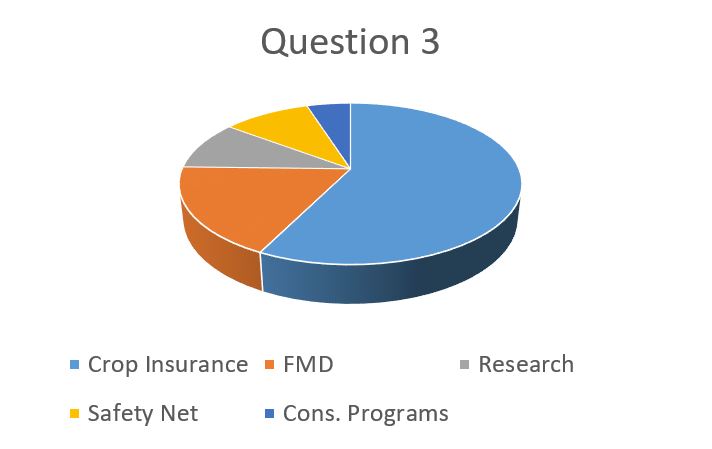Listening session at Hopkinsville Elevator.
KyCorn, with assistance from the National Corn Growers Association, recently held four listening sessions across central and western Kentucky to gather corn farmer input on the next Farm Bill. More than 200 farmers and interested individuals attended.
The format of each event involved a moderated survey of questions that KyCorn and policy experts felt are/will be the most relevant to the negotiations that will guide the decisions of the 2018 Farm Bill. Jonathan Coppess was the moderator. Answers were recorded, anonymously, via electronic keypads. Only farmers were allowed to possess a keypad, and therefore provide an answer.
“We would like to thank everyone who attended one of our Farm Bill Listening Sessions,” said Laura Knoth, KyCorn executive director. “We had a great turnout and will share our corn farmers’ thoughts and concerns with our congressional delegation so they understand how Kentucky farmers are best served by this important national policy. We will also be carrying our corn farmers’ positions to NCGA as we participate in the national corn farmers dialogue on the Farm Bill.”
The series of polling questions began with questions designed to gauge and establish the respondents’ general understanding of farm bill funding and the diversity of programs in the entire farm bill. The vast majority (97 percent) understood that funding for the overall Farm Bill within the federal budget was finite. A similar question was asked, but was more specific to funding available for farmer payments through the various Farm Bill programs, and it received a similar response (98 percent).
The respondents were asked to identify the section of the farm bill that will provide the largest long-term benefit to their individual farming operation; overwhelmingly, the most popular answer was Crop Insurance Programs, receiving triple the number of votes as any other option. In an effort to dig deeper into their feelings about federally assisted crop insurance, 63 percent said they would reduce their farm’s crop insurance coverage and keep their payment portion the same if a premium subsidy cap is implemented, 10 percent said they would pay more to keep their same level of coverage, and many did not know what they would do in such a scenario.
A section of questions was designed to evaluate the farmers’ opinions on ARC and PLC. Sixty-three percent answered that they believe ARC and PLC programs provide appropriate revenue and price protection tools. When asked to prioritize between these two concepts, the preference seemed to be weighted to ARC, where 90 percent of respondents believe the next farm bill should continue with an updated version of revenue based assistance. Sixty-seven percent of respondents wanted to keep revenue based assistance in favor of a market oriented base price program, or an updated Price Loss Coverage program.
The poll also contained a section on base acres. This topic particularly occupied a lot of discussion at each session. While controversial nationally, the preference seems to be clear in Kentucky. Statewide, 82 percent of corn farmers participating in the poll preferred a system to nationally reset base acres to reflect a more recent history of planted and considered-planted acres. The other option within that question was to essentially maintain the status quo policy for designating base. In the specific regions, Elizabethtown voted 88% for mandatory, Owensboro voted 50% for mandatory, Hopkinsville voted 86% for mandatory and Mayfield voted 100% for a mandatory base acres update.
In the series of questions pertaining to the Conservation Title of the Farm Bill, 89 percent identified conservation programs to be important to providing the vote balance to pass a farm bill. EQIP and CSP were the highest vote getters when respondents were asked to identify their favorite conservation program. Sixty-four percent of the farmers wanted to see the CRP acre cap increased; to accomplish an increase, a vast majority preferred to see that funding come from an adjustment to rental rates as opposed to being transferred from funding for other conservation programs.
A final set of polling questions regarding international trade promotion programs were posed to the farmers in the rooms. Ninety-three percent believe that international trade will play a positive role in their farm’s profitability over the next five to 10 years, as opposed to seven percent not seeing a benefit or not having an opinion. Eighty-six percent support raising the authorized spending levels of the Market Access Program and Foreign Market Development program. Slightly more than half of those who responded with support for increasing those spending levels answered that they would withdraw support for those increases if the funding came from Farm Program spending.


